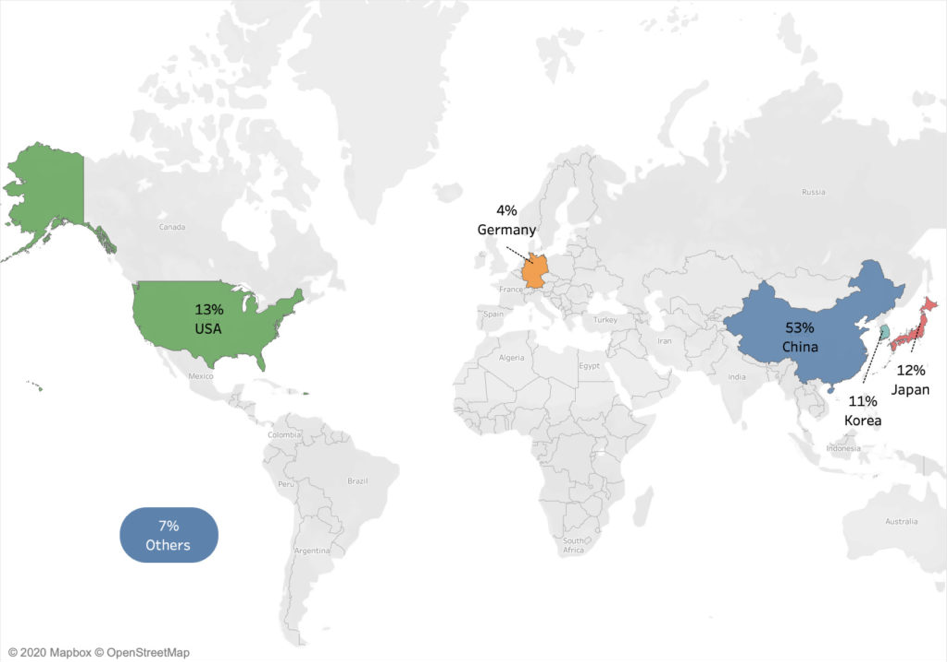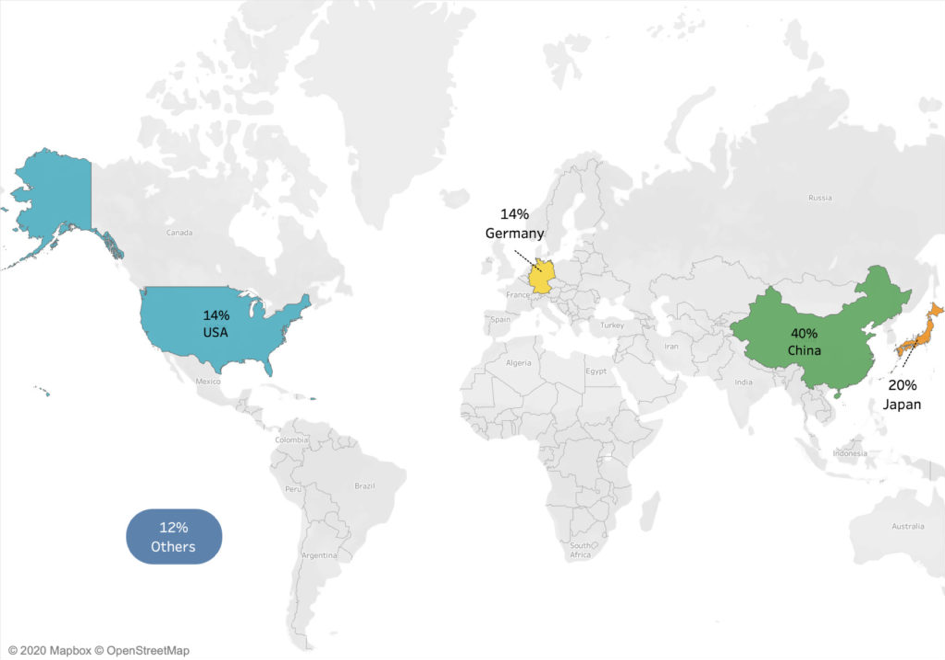“It is quite fascinating that out of 565 WEVC patents published in 2019-2020, China is the birthplace of a whopping 401 patents, followed by the United States and Japan. This is primarily due to the government’s role and interest in promoting startups and universities.”
With a growing number of users and increased demand for consumer electronics, smart-wearables, electric vehicles, Internet-of-Things (IoT) and Internet-of-Everything (IoET), the need for powering such devices and for hassle free charging has to keep pace with this rapid growth.
“Wireless Charging” is the process of electrically charging battery-powered devices and equipment without the need for a wired electrical power connection. Broadly speaking, it includes three sub-types of charging:
- Inductive Charging
- Resonance Charging, and
- Radio Charging
In the initial days, smart device manufacturers were dependent on vendors for wireless charging technology for their devices, but with major smart device companies showing their interest in research and development of non-contact charging technology, wireless charging is much in news. Xiaomi’s Wireless power bank and Logitech’s 3-in-1 wireless charging dock are new entrants in this domain.
Wireless Charging Technology
Research on patent data shows that more than 40,000 patent families relate to wireless charging technology, which includes technologies disclosing high power charging for EV’s and low power charging for smart devices like mobile phones, smartwatches, earphones etc.

Wireless charging technology patents by country of origin.
Being a technology hub, China is leading the race, with more than 50% of total patents in the wireless charging domain originating in China. Patents in the realm of wireless charging in China are evenly distributed among a wide range of organizations, ranging from big corporates like State Grid Corporation to startups and small business groups that are coming up in the market with trailblazing technologies.
U.S.-based corporates like Qualcomm and Apple are also actively developing new technologies in this domain, but when it comes to key technology for products, these companies are still dependent on the Chinese market as it is the most cost-effective and efficient. The majority of patents filed in the United States originated from China.
Unlike China and the United States, wireless charging patents in South Korea are concentrated among its major giants, Samsung and LG. Out of around 9,000 Korean patents in the wireless charging domain, Samsung holds around 30% of the patents and LG holds around another 25% of Korean patents and most of these relate to low power charging technology primarily meant for smart devices. Currently, Samsung and LG are the front runners in the international market, with their Galaxy S range and V series flagship smartphones, and are utilizing their patented technology to the fullest.
Wireless Electric Vehicle Charging (WEVC) Technology
As a hub of the automobile industry, Japan is catching up to the United States and China with patents related to Wireless Electric Vehicle Charging (WEVC) technology.
Out of around 5,000+ patents in the WEVC domain, China is the country of origin for around 40% of total patents, followed by Japan, the United States and Germany. These countries are competing fiercely to come up with a standard technology in association with various standard setting organizations.

Wireless Electric Vehicle Charging patents by country of origin.
Unlike China, where R&D activity is distributed among many small groups and startups, auto giants Toyota, Nissan and Hyundai hold the major chunk of WEVC patents in Japan. In the United States, before 2019, Qualcomm and MIT spinout WiTricity were separately developing WEVC technology. However, they collectively became the largest group in the world for WEVC technology in Feb 2019, when WiTricity, the industry pioneer in wireless power transfer, announced the acquisition of certain technology platforms and IP assets from Qualcomm that were related to Qualcomm’s own ‘Halo Technology’. Now, the two hold a major portion of the WEVC U.S. patent portfolio.
It is quite fascinating that out of 565 WEVC patents published in 2019-2020, China is the birthplace of a whopping 401 patents, followed by the United States and Japan. This is primarily due to the government’s role and interest in promoting startups and universities, enabling them to explore technology in green energy sectors. Recently, Chinese wireless EV charging startup Invispower Co, founded in 2015 with its R&D team belonging to Tsinghua University, has been accelerating the industrialization of its wireless charging technology. In 2019-2020, Ma Junchao, Lu Jun, He Fanbo and Ge Junjie of Beijing Invispower Technology (China) emerged as the top innovators, with more than 100 patents being accredited to their CEO and founder Wang Zhe.
We have also seen some recent development in WEVC technology in European countries, especially Norway, aimed at curbing pollution. In Norway, the government has set the goal of making Oslo the world’s first city to install wireless charging systems for electric taxis. However, if you scroll through the patent data, it becomes clear that European automakers are dependent on U.S. and Japanese technology companies to implement their idea of hassle-free car charging.
Future trends
In the coming months, it will be interesting to see a new-age, hassle-free charging system that enables drivers to charge their vehicle on the run, thus saving hours of charging time. In Sweden, ElectReon has recently completed a test of dynamic wireless charging—the world’s first Wireless Electric Road for Trucks on the island of Gotland—and it would be exciting to see such systems at commercial scale for public use. In an case, the future of wireless charging looking promising, and seems to be approaching us at a faster pace than expected.

![[IPWatchdog Logo]](https://ipwatchdog.com/wp-content/themes/IPWatchdog%20-%202023/assets/images/temp/logo-small@2x.png)

![[Advertisement]](https://ipwatchdog.com/wp-content/uploads/2024/04/Patent-Litigation-Masters-2024-sidebar-early-bird-ends-Apr-21-last-chance-700x500-1.jpg)

![[Advertisement]](https://ipwatchdog.com/wp-content/uploads/2021/12/WEBINAR-336-x-280-px.png)
![[Advertisement]](https://ipwatchdog.com/wp-content/uploads/2021/12/2021-Patent-Practice-on-Demand-recorded-Feb-2021-336-x-280.jpg)
![[Advertisement]](https://ipwatchdog.com/wp-content/uploads/2021/12/Ad-4-The-Invent-Patent-System™.png)







Join the Discussion
No comments yet.